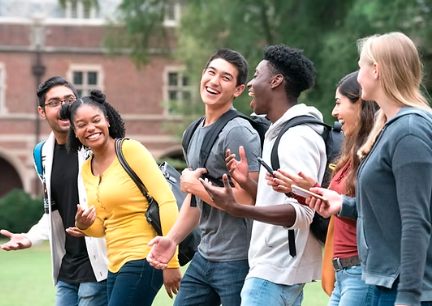In today’s rapidly changing academic and professional world, communication is more than just speaking or writing—it’s a core life skill. As we move through 2025, students who master strong communication abilities are gaining a clear edge, both inside the classroom and in future careers. Let’s explore the communication skills that are helping students stand out in positive, forward-thinking ways.
1. Active Listening: The Foundation of Understanding
Successful communication begins with listening. In 2025, active listening is a standout skill that allows students to understand instructions clearly, contribute meaningfully in class discussions, and engage with diverse perspectives. This involves giving full attention, asking clarifying questions, and responding thoughtfully.
2. Clear and Concise Verbal Expression
Whether presenting in class, participating in debates, or contributing to group work, students who express their ideas clearly and confidently are more likely to be seen as leaders. Practicing articulation and adjusting tone for different audiences—teachers, peers, or community groups—adds to their effectiveness.
3. Confident Nonverbal Communication
Body language, eye contact, posture, and facial expressions matter more than many realize. Nonverbal cues can reinforce spoken messages or create misunderstanding if not managed carefully. In 2025, students are becoming increasingly aware of how their presence influences their message.
4. Empathy in Communication
Being able to understand and respect others’ perspectives is essential, especially in group settings. Empathetic communicators can collaborate more smoothly, resolve conflicts peacefully, and contribute to inclusive learning environments. This emotional awareness builds stronger relationships both academically and socially.
5. Written Communication in a Digital Age
From emails to reports to discussion forums, digital writing is a daily reality for students. Those who know how to write with clarity, professionalism, and structure are more likely to succeed. In 2025, effective students are also learning how to tailor their writing styles to different platforms and audiences.
6. Presentation and Public Speaking Skills
With more classrooms incorporating virtual and in-person presentations, students who feel comfortable speaking to groups gain a big advantage. Organizing ideas logically, using visuals effectively, and speaking with enthusiasm all contribute to powerful presentations.
7. Adaptability in Communication Styles
Every situation requires a different approach—what works for a group project may not work in an interview or peer conversation. Students who are flexible and culturally aware in their communication styles are better equipped for success in diverse settings.
8. Constructive Feedback and Collaboration
In group work and peer review activities, the ability to give and receive feedback respectfully is vital. Constructive communicators know how to address challenges without causing conflict and how to turn suggestions into improvements.
9. Digital Etiquette and Responsible Messaging
With communication happening across email, chat, and video platforms, understanding digital etiquette is essential. Respectful tone, appropriate timing, and awareness of online presence are all key to building a positive digital reputation.
10. Storytelling for Connection
More than ever, students are using storytelling to connect with their audience—whether in personal essays, interviews, or social platforms. Being able to craft a compelling narrative makes their message memorable and meaningful.
Final Thought
In 2025, communication is more than a soft skill—it’s a success skill. Students who build strong, respectful, and adaptive communication habits are better equipped not just to achieve academic goals, but to thrive in all areas of life. By listening carefully, expressing themselves clearly, and staying open to diverse viewpoints, they’re setting themselves apart in the best possible way.














